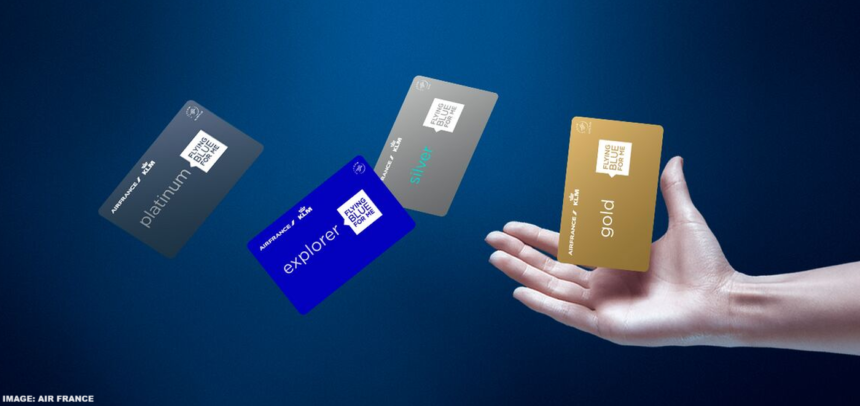The latest craze among airline frequent flier programs in Europe has been to follow the steps of the US programs and go revenue-based for status qualification after first moving miles earnings based on ticket spend.

Finnair started this in Europe (read more here), and British Airways (read more here) and Iberia (read more here) followed this year with eye-wateringly high spending requirements that make reaching even a basic tier close to impossible for most of the traveling public.
CNN ran a piece about these programs today. The story mainly concentrates on the changes that BA and Iberia have instituted this year and how these have truly enraged their frequent flier base (myself included).
It seems that the only head of the frequent flier program willing to be interviewed by CNN for this story was Mr. Lipsey of Flying Blue who made some interesting remarks.
Flying Blue is considering a “revenue component,” admits Lipsey — maybe a minimum spend or a flight requirement. But nothing more. “You don’t put a price on loyalty,” he says.
Flying Blue recently ended rolling over XPs that members use to qualify for status and eventually for lifetime Platinum if they continuously held the status for 10 years (no interruptions allowed).
Flying Blue Starts Limiting Rollover XPs From November 1, 2024
Flying Blue currently has no requirement even to take a flight on Air France or KLM to qualify for status, but apparently, this MIGHT BE changing.
The minimum spend requirement, however, can be pretty significant if you consider what other airlines now require for similar levels as Flying Blue Silver, Gold, or Platinum.
Flying Blue’s Current Status Requirements:
Silver (SkyTeam Elite)= 100 XPs
Gold (SkyTeam Elite Plus) = 180 XPs
Platinum (SkyTeam Elite Plus) = 300 XPs
Ultimate (SkyTeam Elite Plus) = 900 UXPs (XP’s that can only be earned on AF & KL flights)
You earn XPs based on the flight distance and ticketed cabin.

You can earn Silver by flying five long-haul flights in business, Gold by taking six longer flights, and Platinum by taking 10 long-haul segments in business.
Flying Blue could easily mandate that 25% to 50% of these earned XPs must be on Air France or KLM-marketed flights or have a revenue requirement for each tier that has to be earned on Air France and KLM-issued tickets.
It would surprise me if the revenue requirement from AFKLM tickets for these tiers were €3K for Silver, €6K for Gold, and €9K for Platinum, and they would still be significantly lower than those of BA/IB and US airlines.
Other Quotes from that CNN Piece:
That carrot essentially drives “irrational behavior,” says Benjamin Lipsey, senior vice president for customer loyalty at Air France-KLM (sibling airlines to Delta in the SkyTeam alliance) and president of their loyalty program, Flying Blue, which was named best airline rewards program last year by online platform Point.me.
“A rational consumer would take the cheapest flight at the best time. From a psychology perspective, [loyalty programs] are about trying to stimulate irrational behavior,” he says.
Yes. People pay extra, make unnecessary connections, position themselves in another city to begin the trip, etc. And, yes, I have done all these, including this week.
“It’s important to let customers feel they can find gamification opportunities,” he says.
“If [on Flying Blue] you do London-Paris-New York, or London-Amsterdam-Tokyo, by connecting you achieve status more easily. Me personally, I’m happy with that.”
I have pointed out that my earnings on AeroMexico tickets are far superior than if I had taken the same flights on AFKLM: Swift Flying Blue Customer Service Resolution (Miles Miscredit)
That’s because credit card companies buy the miles from the airlines to reward their customers. Lipsey calls it “an incredibly lucrative source of revenue for airlines.” In other parts of the world, especially where credit cards are less ubiquitous, it’s not possible to rack up status purely with cards.
US programs are not really for frequent fliers anymore—just look at AA’s. Flying Blue has been very open about the fact that they are after credit card point conversions from US banks and, hence, need to offer incentives for that market.
“I think a lot of companies forget loyalty is a two-way street,” says Lipsey, though he’s at pains to say he’s not talking about any airline in particular. “It’s not just a transactional relationship; trust is really crucial… When the program makes a change, it reflects on the airline and vice versa.”
Lipsey is correct here, and perhaps he should make sure that Flying Blue follows this as well rather than devaluing miles without any advance notice to members like what happened in January: Air France – KLM Flying Blue Award Stealth Devaluation January 13, 2025
Lipsey’s Flying Blue program has launched a “status match” campaign for disaffected BA customers. He says “several thousand” have already signed up, half of whom are gold-card holders or above. “We hope to achieve between €20-30m in incremental customer value from these customers who matched,” he says. Virgin Atlantic is also happily status-matching BA elites.
BA must be bleeding elite members right now who are looking for other programs, but remember that these programs may also change.
Air France & KLM Flying Blue’s Status Match For British Airways Elite Members In The UK
For Lipsey, a spend-based system is a dangerous gamble.
“BA has basically said ‘Gold is worth £20,000’ so now as a customer you start saying, ‘Am I getting £20,000 worth of value?’ If it’s purely revenue-based, that’s the risk. And I think it removes the irrational behavior that is key to loyalty programs.
“It’s a bold move they’ve made. What they’ve done is basically fired the leisure customer. Whether they need those or not is up to them to decide. I’m sure they’ve done their homework.”
You may have taken an extra step to qualify for BA Gold when it required some extra cash, but what about when the new requirement is 20K GBP? This is certainly out of reach for the majority of travelers.
Conclusion
I think that these airline programs, and to a certain extent hotel ones as well, alienate frequent travelers when they move to frequent spender programs, and you should ask yourself: Are all these non-travel-related transactions worth it?
All US airlines, and soon BA, will allow you to earn at least part of the required status miles/points/dollars by swiping their cobranded cards. American Airlines allows you to earn even their highest tier without ever setting foot inside the place by earning Loyalty Points from various transactions.
These BA and possible upcoming Flying Blue changes also affect me, as I have covered here on LoyaltyLobby.
I have been relatively close to the Lifetime Gold (Oneworld Emerald) on BA (read more here), which requires 35,000 Tier Points, and I am currently taking some trips to get as close as possible to this requirement by the end of next month.
Frequent AeroMexico flights during the pandemic got me started with Flying Blue, and I now have 4 Platinum years and 801 XPs banked. I will have at least 7 lifetime years by the time my membership year changes on June 30th, but that still leaves me 3 years short, and who now knows what changes might be coming later this year or next? I am sure that this revenue component they are “considering” will materialize, as it will drive spending in the short term.
When can we conclude that these loyalty programs are not worth the money they require, given what they deliver? Have they already reached the tipping point? What is your take? Please comment below.





